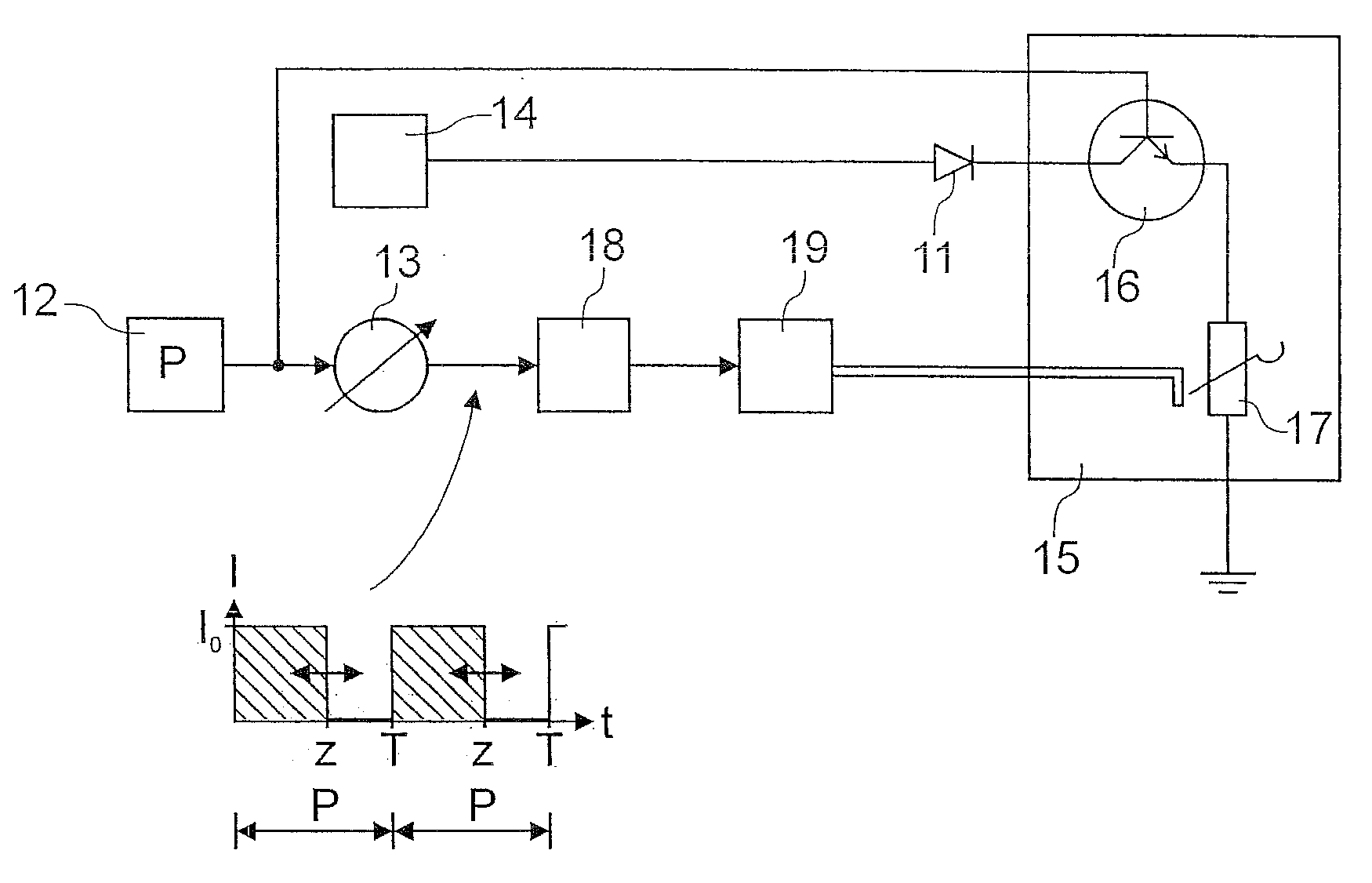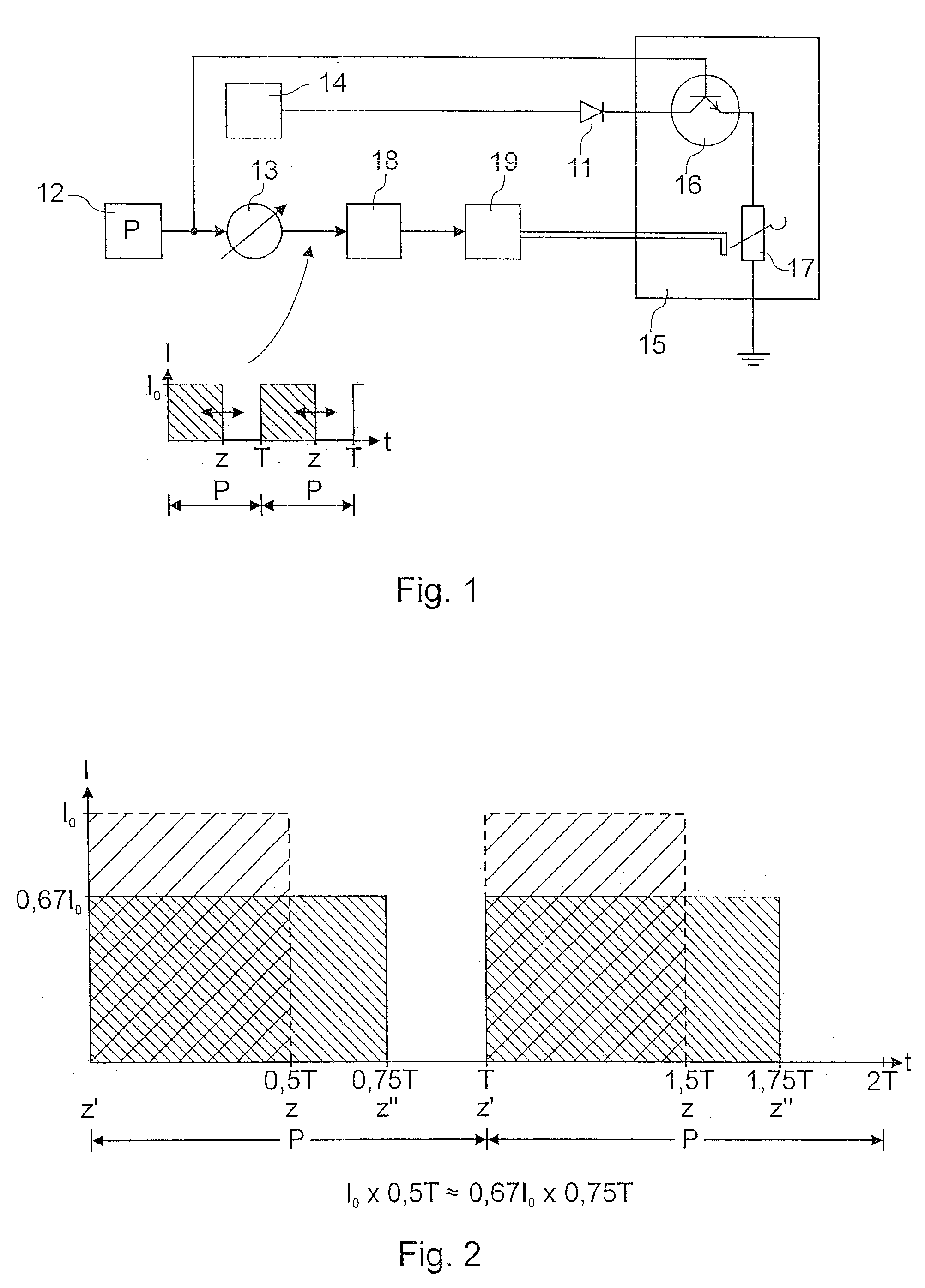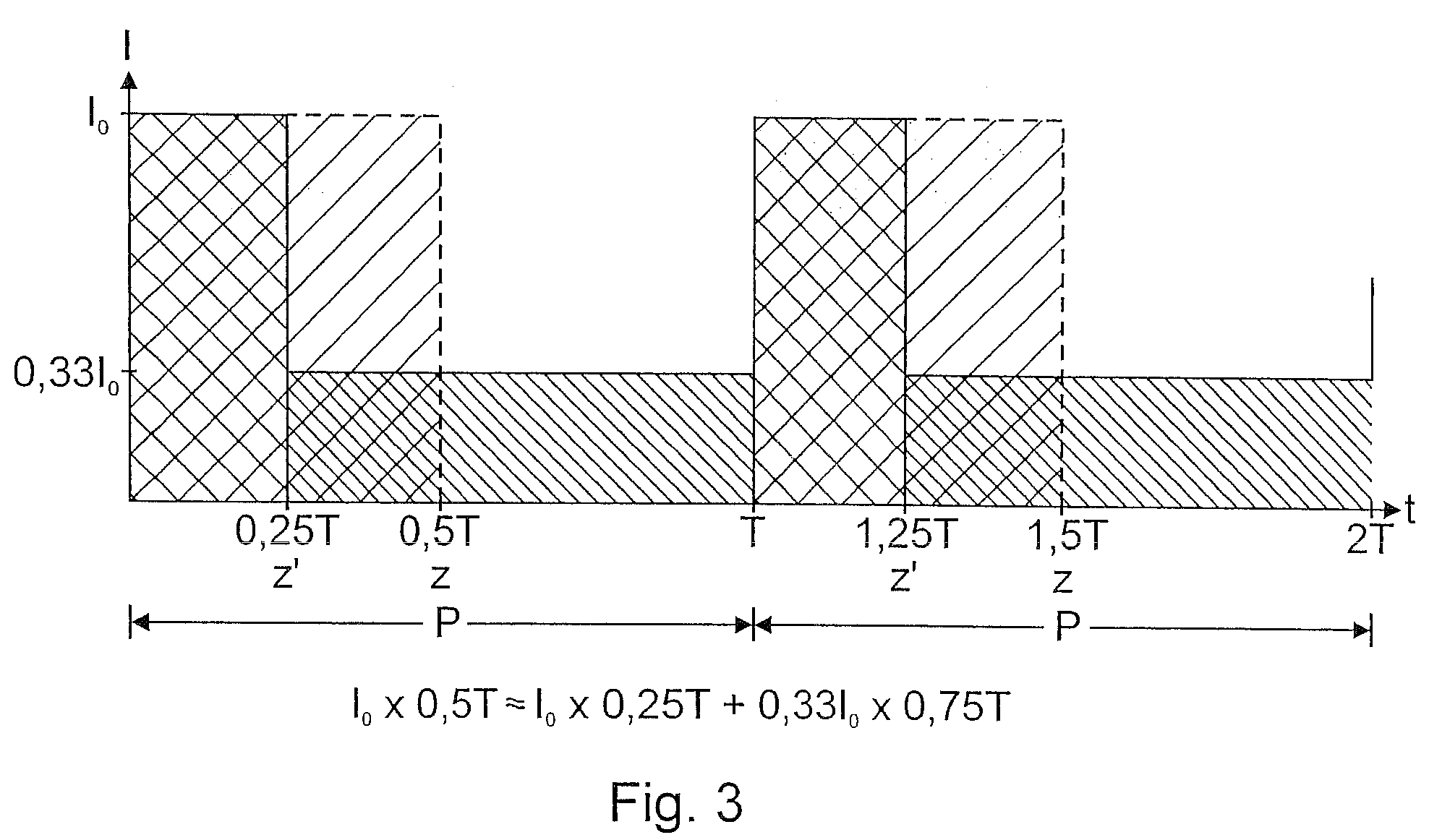Method for generating mixed light colors
a technology of mixed light and color, applied in the direction of electric variable regulation, process and machine control, instruments, etc., can solve the problems of inability to obtain a dimming ratio, inability to achieve intensive led dimming through extremely short current pulses, and physiologically be perceived as disturbing
- Summary
- Abstract
- Description
- Claims
- Application Information
AI Technical Summary
Benefits of technology
Problems solved by technology
Method used
Image
Examples
Embodiment Construction
[0020]The block diagram in FIG. 1 illustrates a basic example of the variable energization of an LED as a colored light source 11. In practice, a number of such light sources 11 emitting light of the same color are connected in series. For different colored light sources, the energization is effected independently of one another in the same way. The additive mixing of these color contributions with differently predeterminable brightnesses determines the color locus of the resultant mixed light color. The respective brightnesses of the color contributions are determined by the periodic current integrals.
[0021]The period P is predetermined by a timer 12. An actuator 13 is used to predetermine the emission brightness of the light source 11 as a duty ratio z / T for a specific constant current intensity, for instance the maximum or nominal current I0. The current is supplied from a voltage source 14, downstream of which a constant-current current sink 15 is connected, in series with the a...
PUM
 Login to View More
Login to View More Abstract
Description
Claims
Application Information
 Login to View More
Login to View More - R&D
- Intellectual Property
- Life Sciences
- Materials
- Tech Scout
- Unparalleled Data Quality
- Higher Quality Content
- 60% Fewer Hallucinations
Browse by: Latest US Patents, China's latest patents, Technical Efficacy Thesaurus, Application Domain, Technology Topic, Popular Technical Reports.
© 2025 PatSnap. All rights reserved.Legal|Privacy policy|Modern Slavery Act Transparency Statement|Sitemap|About US| Contact US: help@patsnap.com



